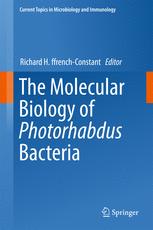The Molecular Biology of Photorhabdus Bacteria 2017
دانلود کتاب پزشکی زیست شناسی مولکولی باکتری Photorhabdus
| نویسنده |
Richard H. ffrench-Constant |
|---|
| تعداد صفحهها |
213 |
|---|---|
| نوع فایل |
|
| حجم |
5 Mb |
| سال انتشار |
2017 |
89,000 تومان
این کتاب بهروزرسانی اساسی در مورد مجموعه حیرتانگیز سموم آفتکشها و داروهای جدید تولید شده توسط باکتریهای قابل توجه Photorhabdus ارائه میکند. فصل های مربوطه همه چیز را از زیست شناسی مولکولی دقیق “کمپلکس های سم” یا Tc، تا پیچیدگی پاسخ ایمنی حشرات در رابطه با باکتری و ناقل نماتد توصیف می کنند. این جلد هم اولیه (تولید و تنظیم سم) و هم ثانویه (سنتز و تنظیم محصول طبیعی) را پوشش می دهد و بر استفاده بالقوه از سموم و داروها در کشاورزی و پزشکی تأکید می کند. همچنین به تفصیل دو مکانیسم کاملاً جدید سنجش حد نصاب و نقش بالقوه زیر واحدهای تک LuxR در سنجش حضور میزبانهای باکتریایی مختلف را مورد بحث قرار میدهد. در نهایت، این کتاب مورد منحصر به فرد P. asymbiotica را بررسی می کند، که به نظر می رسد توانایی آلوده کردن حشرات و انسان ها را تکامل داده است. این سنتز ثابت می کند که Photorhabdus واقعاً یک “معدن طلا” برای کشف پروتئین های حشره کش جدید و محصولات طبیعی جدید با کاربردهای بالقوه در کشاورزی و پزشکی ارائه می دهد.
This book provides an essential update on the startling array of novel insecticidal toxins and drugs produced by the fascinating bacterium Photorhabdus. The respective chapters describe everything from the detailed molecular biology of the ‘Toxin complexes’ or Tc’s to the complexity of insect immune response in relation to both the bacterium and its nematode vector. The volume covers both primary (toxin production and regulation) and secondary (natural product synthesis and regulation) metabolism and emphasises the potential use of toxins and drugs in both agriculture and medicine. It also discusses in detail two totally novel quorum sensing mechanisms and the likely role of LuxR solos in sensing the presence of different bacterial hosts. Lastly, the book explores the unique case of P. asymbiotica, which seems to have evolved the ability to infect both insects and humans. This synthesis proves that Photorhabdus truly does offer a ‘gold mine’ for the discovery of novel insecticidal proteins and novel natural products with potential uses in agriculture and medicine alike.




